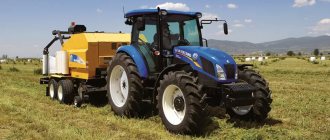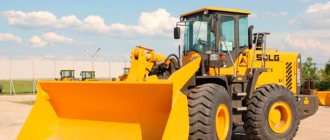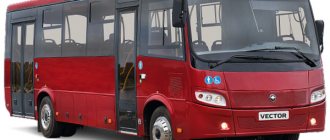How are regulations regulated?
A vehicle requires fuel to operate. Each category of car requires different volumes of fuel and lubricants. The Ministry of Transport has developed a special standard - this is the fuel consumption rate for car brands. The standard allows you to determine how much fuel and lubricants a specific brand of vehicle requires to support the technological process. The standards are developed only in relation to the operating process of vehicles. For example, it is unacceptable to use values to calculate the write-off of fuel and lubricants during repair, adjustment or testing. For technological purposes, additional fuel consumption standards (FLC) should be established.
The Ministry of Transport introduced the standards by a separate Order No. AM-23-r dated March 14, 2008 (as amended on September 20, 2018). The document establishes several categories of standards for fuel and fuel consumption:
- Basic standard for gasoline consumption in liters per 100 km in running order.
- Transport standard in liters per 100 km in operation (during transport work), including:
- cost standard for a bus taking into account curb weight and nominal passenger load;
- consumption standard for dump trucks, taking into account equipment and nominal vehicle load.
- Transport standard for a truck in liters per 100 ton-kilometers, determined during transport work.
Standards are set in liters, for example, for gasoline or diesel fuel. Or the standards are fixed in cubic meters if, for example, transport consumes gas.
How many cubic meters of sand are in KAMAZ Pros and cons
A KAMAZ truck with a side length of 9 meters and designed for transporting heavy equipment, various construction materials, and other cargo with non-standard dimensions that cannot be transported by shorter vehicles. Manufacturers solved this problem and even did more, showing us the reliable and robust design of the Kamaz 5511, a three-axle dump truck with a 6x4 wheel arrangement, which has high cross-country ability, a fairly large load capacity and universal technical characteristics.
| Model | In the cold season, l. | In the warm season, l. |
| 6540 | 37,5 | 34 |
| 6522 | 39 | 35,5 |
| 65201 | 41 | 37 |
| 6520 | 32 | 29 |
| 65115 | 30 | 27,5 |
| 65111 | 33 | 30 |
| 55111 | 30 | 27 |
| 55102 | 29 | 26,5 |
| 45143 | 28,5 | 26 |
| 45141A | 37 | 33,5 |
| 43255 | 24 | 22 |
Is it possible to develop individual standards?
Whether or not to use the standards of the Ministry of Transport in your work is the decision of the company’s management. That is, at the legislative level there are no requirements for the mandatory use of NRT.
The Tax Code does not require standardization of costs for fuels and lubricants either according to the corporate income tax or under the simplified tax system. A similar position is supported by the Ministry of Finance (Letters dated March 22, 2019 No. 03-03-07/19283, dated September 27, 2018 No. 03-11-11/69335). Each organization must make its own decision about working with fuel standards.
Cost standards are allowed to be developed independently. For example, an institution, based on the recommendation of the Ministry of Transport, approves its own standards. The indicators correspond to the real characteristics of vehicles used in the process of life.
The ministry's recommendations are just standard values calculated based on the general characteristics of car brands. Despite the correction factors, in practice the values differ significantly from the actual costs. Therefore, organizations have the right to approve their own indicators.
Approve standard values by local order.
Basic fuel consumption rate
Attention! This forum is moderated. To gain access to it, you must register or log in to the site.
Pages: 1 Basic fuel consumption rate Visited Messages: 71 Authority: 5 Registration: 09/06/2012 12/04/2013 11:43:35
Good afternoon Please tell me, does the basic fuel consumption rate mean a linear rate?
And our programmer has another question: is it possible to modify the function uatProtectedFunctions.uatCalculate Fuel Consumption According to Norm (submarine, vehicle, fuel, Organization, Refusal, ,False) so that mileage with a load and mileage empty can be passed into it as parameters, since . our clients want to calculate the fuel consumption rate not according to the speedometer readings, but according to the instructions of the submarine. Otherwise, we will have to write a similar function from scratch.
Visitor Messages: 625 Authority: 115 Registration: 01/22/2013 12/05/2013 16:49:41
Good afternoon The basic fuel consumption rate refers to the linear rate. It is possible to transfer the mileage according to the Task to the Speedometer readings. To do this, click the “Calculate speedometer by task” button.
Visitor Messages: 540 Authority: 100 Registration: 02/25/2010 12/06/2013 16:34:51
Good afternoon, Anna. The function uatProtectedFunctions.uatCalculate Gas ConsumptionAccording to the Norm is protected; you cannot change it on your own.
Please explain why the standard mechanism for calculating fuels and lubricants is not suitable? In your description, I did not see any contradictions with the existing formula. As our experience shows, in most cases the desire to make changes to the algorithm for calculating fuel and lubricants is due to the fact that the user/programmer does not fully understand this functionality.
The submarine's task details the total mileage according to the waybill. Loaded mileage is always taken into account based on data from the “Task” tab. The entire submarine mileage indicated in the header consists of loaded and empty mileage. That. If you subtract the loaded mileage (according to the task) from the mileage in the header (speedometer readings), you will get the total empty mileage.
Visited Messages: 71 Authority: 5 Registration: 09/06/2012 12/09/2013 12:16:52
Our task is simply to set up the program for the client in such a way that fuel consumption is carried out according to the norm, according to the task (for which we enter the approved route distances) and according to the speedometer (these are the readings that the driver gives us). Because fuel is being stolen uncontrollably at the enterprise, it was decided to configure the program in such a way that any deviations from the given route were visible. We still cannot fully understand the formula for calculating fuel and lubricants for tractors. How to set the standards correctly so that you can take into account the standard for transporting trailers? Trailers can be different every day.
Visitor Messages: 625 Authority: 115 Registration: 01/22/2013 12/09/2013 18:09:40
Good afternoon To correctly take into account the norms for the transportation of trailers, it is necessary to indicate the norm for the change in dead weight in the tractor model card, and indicate the Dead weight of trailers in the trailer model cards.
Visited Messages: 71 Authority: 5 Registration: 09/06/2012 12/10/2013 07:04:27
We tried that. I put the coefficient for the change in dead weight at 1.3, the dead weight of the trailer is 9 tons. When calculating fuel and lubricants according to the norm, the incredible amounts of 13 thousand are obtained. Then describe the algorithm for calculating the norms for transporting trailers, otherwise it’s not at all clear how the program calculates.
Visitor Messages: 625 Authority: 115 Registration: 01/22/2013 12/10/2013 18:05:24
For cargo flatbed vehicles and road trains, the normalized value of fuel consumption is calculated according to the following ratio:
How to count
Officials identified three main concepts:
| Basic NRT | This is the standard cost of fuel and lubricants. Installed separately for each brand of vehicle. Takes into account individual designs, curb weight, type of fuel consumed and other characteristics. The type of flow is applicable for standard, typified situations. |
| Transport NZT | This type of regulatory use is applied taking into account the characteristics of the transport operation of the unit. In essence, this is a basic standard, recalculated taking into account the carrying capacity, towing force, and the rated load of cargo or passengers. That is, a standard taking into account the performance characteristics of the car. |
| Operational NRT | This is a real cost standard, which is recalculated taking into account correction factors. These are basic and transport NRT, which take into account the operating conditions of the vehicle (terrain, climate, temperature conditions and other operating features). |
Each of the standard values is recalculated in relation to the base value, taking into account correction factors. A detailed table of fuel consumption standards for 2022 reveals values by car brand. Abbreviations in the table:
- B - gasoline;
- D - diesel fuel;
- LPG - liquefied petroleum gas;
- CNG is compressed natural gas.
| Model, brand, modification of the car | Basic rate, l/100 km | Type of fuel |
| VAZ-1111 "Oka" | 6,5 | B |
| VAZ-11113 "Oka" (VAZ-11113-2L-0.75-35-4M) | 5,6 | B |
| VAZ-11183 "Kalina" (VAZ-21114-4L-1,596-81-5M) | 8,0 | B |
| VAZ-2104 | 8,5 | B |
| VAZ-21041 (VAZ-21067.10-4L-1,568-74,5-5M) | 9,1 | B |
| VAZ-21043 (VAZ-2103-4L-1.45-71-5M) | 8,3 | B |
| VAZ-21043 (VAZ-2103-4L-1,451-71,5-4M) | 9,0 | B |
| VAZ-2105, -21051, -21053 | 8,5 | B |
| VAZ-2106 (VAZ-2106-4L-1.57-75.5-5M) | 8,5 | B |
| VAZ-2106 (VAZ-2106-4L-1.57-75.5-4M) | 9,0 | B |
| VAZ-21061 | 9,0 | B |
| VAZ-21063 (VAZ-2130-4L-1.77-82-5M) | 9,0 | B |
| VAZ-2107 (VAZ-2103-4L-1.45-72.5-4M) | 8,6 | B |
| VAZ-21072 (VAZ-2105-4L-1.3-63.5-4M) | 8,9 | B |
| VAZ-21074 (VAZ-2106-4L-1.57-75.5-5M) | 8,5 | B |
| VAZ-21074 (VAZ-21067-4L-1,568-74,5-5M) | 8,9 | B |
| VAZ-2108, -2108 “Sputnik”, -21081, -21083, -2109 | 8,0 | B |
| VAZ-21093 (VAZ-2111-4L-1,499-79-5M) | 7,7 | B |
| VAZ-21093; -21099 1.5i (VAZ-21083-20-4L-1.5-71-5M) | 7,5 | B |
| VAZ-21099 (VAZ-2111-4L-1,499-79-5M) | 7,8 | B |
| VAZ-2110 1.5i (VAZ-21083-20-4L-1.5-71-5M) | 7,4 | B |
| VAZ-2110-010 (VAZ-2110-4L-1,499-73-5M) | 7,8 | B |
| VAZ-21102 (VAZ-2111-4L-1,499-79-5M) | 7,5 | B |
| VAZ-21103 (VAZ-2112-4L-1,499-92-5M) | 7,7 | B |
| VAZ-21104 (VAZ-21124-4L-1,596-90-5M) | 8,4 | B |
| VAZ-2111 (VAZ-2111-4L-1,499-79-5M) | 7,6 | B |
| VAZ-21112-00 1.6 (VAZ-21114-4L-1,596-80-5M) | 8,3 | B |
| VAZ-21113 (VAZ-2112-4L-1,499-92-5M) | 7,8 | B |
| VAZ-2112 (VAZ-2112-4L-1,499-92-5M) | 7,7 | B |
| VAZ-21140 (VAZ-2111-4L-1,499-79-5M) | 7,9 | B |
| VAZ-21150 (VAZ-2111-4L-1,499-79-3,94-5M) | 7,4 | B |
| VAZ-2120 (VAZ-2130-4L-1,774-82-5M) | 10,7 | B |
| VAZ-212090 "Bronto" armor. (VAZ-2130-4L-1,774-82-5M) | 12,5 | B |
| VAZ-2121, -21211 | 12,0 | B |
| VAZ-21213 (VAZ-21213-4L-1,690-80-5M) | 11,5 | B |
| VAZ-21213B armor. (VAZ-21213-4L-1.69-79-5M) | 12,1 | B |
| VAZ-21214-20 “Chevrolet Niva” (VAZ-21214.10-4L-1,689-82-5M) | 10,9 | B |
| VAZ-21218 (VAZ-21213-4L-1.69-79-5M) | 11,9 | B |
| VAZ-212182 armored (VAZ-21213-4L-1.69-79-5M) | 12,3 | B |
| VAZ-212300 "Chevrolet Niva" (VAZ-2123-4L-1.69-80-5M) | 10,5 | B |
| VAZ-2131 (VAZ-21213-4L-1.69-80-5M) | 11,3 | B |
| VAZ-21310 (VAZ-2130-4L-1,774-82-5M) | 11,5 | B |
| VAZ-213102 "Bronto" armor. (VAZ-2130-4L-1,774-80-5M) | 12,4 | B |
| VAZ-21312 (VAZ-2130-4L-1,774-82-5M) | 11,4 | B |
| VAZ-2302 “Bison” (VAZ-2121-4L-1.57-78-4M) | 11,5 | B |
| GAZ-13 | 20,0 | B |
| GAZ-14 | 22,0 | B |
| GAZ-24, -24-10, -24-60 | 13,0 | B |
| GAZ-24-01, -24-03, -24-11, -24-14, -24T | 13,5 | B |
| GAZ-24-02, -24-04 | 14,0 | B |
| GAZ-24-07 | 16,5 | CIS |
| GAZ-24-12, -24-13 (with engine ZMZ-402, -402.10) | 13,5 | B |
| GAZ-24-12, -24-13 (with engine ZMZ-4021, -4021.10) | 14,0 | B |
| GAZ-24-17, -24-25 | 16,5 | CIS |
| GAZ-3102 (with engine ZMZ-4022.10) | 13,0 | B |
| GAZ-3102 (Chrysler-4L-2,429-137-5M) | 10,7 | B |
| GAZ-3102 (Toyota 3RZ-FE-4L-2,694-152-5M) | 11,2 | B |
| GAZ-3102, -3102-12 (ZMZ-4062.10-4L-2.3-150-4M) | 12,5 | B |
| GAZ-3102-12; GAZ-3102 (ZMZ-4062.10-4L-2.3-150-5M) | 12,0 | B |
| GAZ-310200 (Toyota-6V-3,378-194-4A) | 13,8 | B |
| GAZ-310200 (Rover-8V-3.95-182-5M) | 13,5 | B |
| GAZ-31022 (ZMZ-4021.10-4L-2,445-90-4M) | 13,9 | B |
| GAZ-310221 (ZMZ-40210D-4L-2,445-81-5M) | 13,1 | B |
| GAZ-310221 (ZMZ-40620D-4L-2.3-131-5M) | 11,5 | B |
| GAZ-31029 (Rover-4L-1,994-140-5M) | 11,5 | B |
| GAZ-31029 (ZMZ-402; 402.10 - 4L-2,445-100-4M) | 13,0 | B |
| GAZ-31029 (ZMZ-4021; 4021.10 - 4L-2,445-90-4M) | 13,5 | B |
| GAZ-3105 (8V-3.4-170-5M) | 13,7 | B |
| GAZ-3110 (ZMZ-4026.10; -40200F-4L-2,445-100-4M) | 13,0 | B |
| GAZ-3110 (Rover-4L-1,996-136-5M) | 10,7 | B |
| GAZ-3110 (ZMZ-4020 OM-4L-2,445-100-5M) | 12,2 | B |
| GAZ-3110 (ZMZ-4062.10-4L-2,287-150-5M) | 11,4 | B |
| GAZ-3110 (ZMZ-40210D; -4021-4L-2,445-90-5M) | 13,0 | B |
| GAZ-3110 (ZMZ-4026.10; -402-4L-2,445-100-5M) | 12,1 | B |
| GAZ-3110 (ZMZ-40620D-4L-2.3-131-5M) | 11,5 | B |
| GAZ-3110-551 (Chrysler-4L-2,429-137-5M) | 10,6 | B |
| GAZ-31105 (ZMZ-40620D-4L-2.3-131-5M) | 11,5 | B |
| ZAZ-1102 | 7,0 | B |
| ZIL-114 | 24,0 | B |
| ZIL-117 | 23,0 | B |
| ZIL-4104 | 26,0 | B |
| ZIL-41047 (8V-7.68-315-3A) | 26,5 | B |
| IZH-2125, -21251, -2126 | 10,0 | B |
| LuAZ-1302 | 11 | B |
| Moskvich-2136, -2140, -2141 (all modifications) | 10,0 | B |
| Moskvich-2141 “Yuri Dolgoruky” (Renault-4L-1,998-113-5M) | 8,6 | B |
| Moskvich-2141-22 (UZAM-3317-4L-1.7-85-5M) | 9,4 | B |
| Moskvich-2141-22 (UZAM-3320-4L-2.0-91-5M) | 9,6 | B |
| Moskvich-21412-01 (UZAM-331.10-4L-1,478-72-5M) | 8,5 | B |
| Moskvich-21412-01 (UZAM-3313-4L-1,815-85-5M) | 9,0 | B |
| Moskvich-214145 “Svyatogor” (Renault-4L-1,998-113-5M) | 8,8 | B |
| Moskvich-2142 “Prince Vladimir” (Renault-4L-1,988-113-5M) | 8,9 | B |
| Moskvich-2142 “Ivan Kalita” (Renault-4L-1,988-145-5M) | 10,2 | B |
| UAZ-31512 (ZMZ-4025.10-4L-2.45-90-4M) | 15,5 | B |
| UAZ-31512 (ZMZ-40260F-4L-2,445-100-4M) | 15,4 | B |
| UAZ-31512 (UMZ-4178-4L-2,445-76-4M) | 15,1 | B |
| UAZ-31514 (ZMZ-4025.10-4L-2,445-90-4M) | 16,7 | B |
| UAZ-31514 (ZMZ-40210L-4L-2,445-81-4M) | 15,5 | B |
| UAZ-31514 (UMZ-41780V-4L-2,445-76-4M) | 15,8 | B |
| UAZ-31514 (UMZ-402100-4L-2,445-74-4M) | 15,6 | B |
| UAZ-31517 (HR 492 NTA -4L-2,393-100-4M) | 11,0 | D |
| UAZ-31519 (UMZ-4218.10-4L-2.89-98-4M) | 14,5 | B |
| UAZ-31519 (UMZ-4218-4L-2.89-84-4M) | 15,9 | B |
| UAZ-31519 (UMZ-4218-4L-2.89-98-4M) | 14,9 | B |
| UAZ-315195 (ZMZ-4090011-4L-2,693-128-5M) | 13,5 | B |
| UAZ-315195 Hunter (ZMZ-40900G-4L-2,693-128-4M) | 13,8 | B |
| UAZ-3153 SBA-4UM (armored) (UMZ-4218-10 -4L-2.89-98-4M) | 16,6 | B |
| UAZ-3153 (UMZ-4218-4L-2.89-84-4M) | 15,4 | B |
| UAZ-3159 “Bars” (ZMZ-4092.10-4L-2.7-133-5M) | 16,5 | B |
| UAZ-31601 (UMZ-421.10-10-4L-2.89-98-5M) | 15,3 | B |
| UAZ-31604 (VM-425LTRV-4L-2.5-105-5M) | 13,2 | D |
| UAZ-3162 SBA 10U (armored) (UMZ-421.10-4L-2.89-98-4M) | 16,0 | B |
| UAZ-31622 (ZMZ-4092.10-4L-2.69-130-5M) | 13,7 | B |
| UAZ-3163-10 “Patriot” (ZMZ-40900R-4L-2,693-128-5M) | 13,5 | B |
The problem of calculating fuel consumption for transport work in a waybill
Attention! This forum is moderated. To gain access to it, you must register or log in to the site.
Pages: 1
The problem of calculating fuel consumption for transport work in a waybill, The problem of calculating fuel consumption for transport work in a waybill
Visited Messages: 4 Authority: 2 Registration: 07/24/2012 07/25/2012 14:07:41
We have: 1C:Enterprise 8.2 (8.2.15.318) software release Vehicle Management Standard 1.0.8.2 dated 06/14/2012 on a Windows2008 server sql2008 on a win7 station
background: We worked in UAT version 3 (everything worked there) and switched to Standard Vehicle Management.
The transition was made to Standard version 1.0.2, followed by a sequential increase in versions to 1.0.8.2.
Now we have a problem: For a number of vehicles, when calculating the waybill, fuel consumption “for transport work” is not taken into account.
In the model description, the fuel consumption norms are filled in. In the waybill, in the additional tab, the output calculation mode “according to instructions” is set to automatic.
Moreover, regarding vehicles, the calculation proceeds normally. For example, for Kamaz, the calculation of mileage and fuel consumption “for transport work” is carried out, but for BelAZ “for transport work” is not considered (the line does not appear in principle).
A comparative analysis of the descriptions of the models did not give anything, it seems that everything is filled in the same way, well, of course, except for the signs characteristic of a particular car brand. What else should you pay attention to?
Modified by: Vladimir Sholopov - 07/25/2012 14:08:30 Visitor Messages: 540 Authority: 100 Registration: 02/25/2010 07/25/2012 18:59:50
Good afternoon, Vladimir. Please send the following screenshots: 1) “Basic data” tab for the “problem” model; 2) Tab “Fuel consumption rates” for the “problem” model; 3) The “Main” tab of the “Waybill” document; 4) Tab “Fuel and lubricants consumption” with a transcript of the document “Waybill”;
If a vehicle type is specified for a model, then indicate what type of vehicle is installed for this type.
Visited Messages: 4 Authority: 2 Registration: 07/24/2012 07/26/2012 10:32:02 The model is set to the type “Cargo dump trucks” Attached files Visited Messages: 187 Authority: 20 Registration: 07/19/2012 07/26/2012 11:55:55
Good afternoon. For dump trucks, based on the load capacity and the standardized load factor, the norm for changes in dead weight is calculated. In your case, you need to set a norm for changing your own weight.
Visited Messages: 4 Authority: 2 Registration: 07/24/2012 07/26/2012 13:29:42
When entering the coefficient for the change in dead weight, the corresponding line will appear in the calculation, from which I conclude that the coefficient for transport work, in the case of a dump truck, is simply not involved in the calculation.
I apologize, but the standard you mentioned “for changes in dead weight” applies to dump trucks, trucks, and tractors loaded with TRAILERS.
Hw - the rate of fuel consumption for transport work - is used in calculating fuel consumption regardless of whether there is a trailer (and the vehicle's own weight increases accordingly) or not.
Your interpretation of the name of this norm does not correspond to the current regulatory document.
And one more problem: if the load factor of the dump truck is zero, the program does not allow it to be saved. What is not right. Because the organization has the right to determine for itself whether to set the load factor to 0.5 or not. And if it is equal to zero (i.e. not set), the coefficient Hw should be used - for transport work!
Calculation for passenger cars
For a passenger car, the standard is calculated using a special formula:
Qн = 0.01 × Hs × S × (1 + 0.01 × D),
Where:
- Qn is the fuel cost standard, calculated in liters;
- Hs is the basic standard of fuel consumption for a vehicle mileage of 100 km;
- S - specific mileage of the car, calculated in km;
- D - correction factor set to the standard, reflected in %.
The basic standard is determined in accordance with the recommendations of the table of standards for write-off of fuel and lubricants of the Ministry of Transport. For example, separate values are provided:
- for domestic transport until 2014;
- for foreign cars before 2008;
- for foreign brands from 2008 to 2014.
IMPORTANT!
Mileage accounting for calculating standard values is carried out exclusively on waybills. This is a special primary document required to be completed by organizations operating transport. Read about the form and rules for filling it out in the article “Instructions: filling out the waybill for a passenger car.”
Purpose
The main purpose of KAMAZ 5511 is the transportation of bulk construction and industrial cargo for various purposes. Construction of buildings and highways, manufacturing and public utilities, agriculture, trade and military transportation - this is not a complete list of areas where the machine can be used. KAMAZ 5511 was designed as a dump truck for operation in all climatic zones, on paved roads and on dirt roads. After just ten years of production, KAMAZ trucks accounted for one-third of the Soviet Union's truck fleet and transported two-thirds of all cargo in the country. Some of the vehicles were produced for export.
The design of KAMAZ 5511 vehicles in the first years of production was based on the KAMAZ 5320. Actually, the vehicle chassis was assembled in Naberezhnye Chelny, and the body and tipping device were installed at the automobile plant in Neftekamsk. Over the entire period of production, the components and mechanisms of the machine were constantly improved, but the dump truck was not radically modernized. The main modifications of KAMAZ 5511 include:
- KAMAZ 55111 is a dump truck with a lifting capacity of 13 tons with a shortened body. The car was produced from 1987 to 2012. The models of the first years of production were equipped with KAMAZ 5511 cabs;
- KAMAZ 55102 is a 7-ton dump truck with a three-way body unloading, designed for towing semi-trailers and trailers weighing up to 11.5 tons. Mainly used for transporting agricultural goods;
- KAMAZ 65115 is a dump truck with an increased payload capacity of 12 to 15 tons. Produced since 1995 in more than ten configuration options. Currently, the design uses both domestically produced units and those from leading global manufacturers;
- KAMAZ 65111 is an all-wheel drive version of a dump truck with a 6X6 wheel arrangement with a load capacity of 14 tons. Production of the car began in 2003 and continues to this day. The truck is offered with three types of wheelbase and is equipped with cabs, both with and without a berth.
All modifications of KAMAZ dump trucks have a high degree of unification of components, parts and mechanisms, which has a positive effect on the possibility of high-quality maintenance and repair.
Calculation for buses
If the company operates buses in operation, then the standards will have to be calculated differently. To do this, use the following formula:
Qn = 0.01 × Hs × S × (1 + 0.01 × D) + Hot × T,
Where:
- Qн is the fuel and lubricants cost standard, calculated in liters;
- Hs - transport NT consumption, determined for a bus mileage of 100 km, calculated taking into account the passenger load normalized by class and purpose of the bus;
- S is the actual mileage of the bus, determined in km according to the waybill;
- Hoth - standard fuel and lubricant costs for the operation of standard independent heaters, calculated in l/h;
- T — actual operating time of the bus with the heater on, h;
- D—correction factor determined to the standard, %.
The actual mileage of the bus is confirmed by the waybill.
Advantages and disadvantages
If we take into account the operating manual or catalog, the dump truck had a large welded all-steel body, which can be classified as a bucket type. The carrying capacity of such vehicles is 20 tons, which is two and a half times higher than the first popular models, and if you compare the body dimensions of these KAMAZ models, it will become noticeable that they have not increased by much.
Calculation for trucks
For freight vehicles, the calculation procedure is more complicated. The calculation takes into account the weight of the cargo, the weight of the trailers, and other transportation characteristics. For dump trucks and tractors, standard values are calculated in a special order.
Formula for calculating the fuel consumption rate for a truck:
Qн = 0.01 × (Hsan × S + Hw × W) × (1 + 0.01 × D),
Where:
- Qn - standard fuel consumption in liters;
- S - mileage of a car or road train, determined in km;
- Hsan is the fuel consumption rate established for the mileage of a car or road train in running order without load.
The last Hsan indicator is calculated separately. To do this, use the formula:
Hsan = Hs + Hg × Gpr, l/100 km,
Where:
- Hs is the basic fuel consumption rate for the mileage of a car (tractor) in running order, l/100 km (Hsan = Hs, l/100 km, for a single car, tractor);
- Hg - fuel consumption rate for the additional weight of a trailer or semi-trailer, l/100 t. km;
- Gpr - trailer or semi-trailer own weight, t;
- Hw—fuel consumption rate for transport work, l/100 t. km;
- W is the volume of transport work, t. km: W = Ggr × Sgr (where Ggr is the mass of the cargo, t, Sgr is the mileage with the cargo, km);
- D — correction factor (total relative increase or decrease) to the norm, %.
Determine the actual mileage using the waybill. Details are in the article “Filling out a new waybill for a truck.”
Fuel consumption calculator
If there is a need to update the current limits at the enterprise, then an order is issued signed by the head of the company, which lists the car models indicating the estimated fuel consumption. Fuel consumption is calculated using our own, empirically derived formulas related to the vehicle’s load, the total weight of the tilt or tipper road train, and the characteristics of the flat or mountain route.
Adjustment factors
Standard recalculation of standards does not provide actual indicators. Officials introduced a special correction factor to the fuel consumption rate. There are several correction values at once. They are installed depending on numerous factors of transport operation. The coefficients both increase and decrease the standards.
For example, when operating in winter, vehicles consume more fuel than in the summer months. At the same time, when driving on an open highway, the car consumes less fuel than, for example, when driving around the city or on a dangerous road section.
Monitor mileage and fuel consumption using Voyager
When operating flatbed vehicles with trailers and truck tractors with semi-trailers, the fuel consumption rate for the mileage of a road train increases for each ton of the trailers’ and semi-trailers’ own weight: gasoline - 2 liters, diesel fuel - 1.3 liters, liquefied gas - 2.5 liters, natural gas - 2 m 3; with a gas-diesel engine - 1.2 m 3 of natural gas and 0.25 liters of diesel fuel. Transitional temperature boundaries between periods according to the established average daily values are considered to be from the winter to the spring period - above minus 5 degrees.
When standards rise
There are quite a lot of reasons for using increasing factors to calculate fuel consumption rates in road transport. The coefficient values vary from 5% to 50%. And in total they give much larger values.
Reasons for increasing fuel consumption standards:
- work in winter - 5-20%;
- operation in mountainous areas - 5-20%;
- complex roads and dangerous sections of roads - 10-30%;
- movement in urban areas - 5-35%;
- the need for frequent technological stops - 10%;
- the need for low speed - 15-35% on average;
- for running in a new car - up to 10%;
- by duration of operation - 5-10%.
These are just the key factors that increase fuel consumption. An exhaustive list is given in Order of the Ministry of Transport of Russia dated March 14, 2008 No. AM-23-r (as amended on September 20, 2018).
Disadvantages of the car. Prices in Russia
Faulty valves and reservoir plug gaskets, leaks in the cooling system connections and insufficient coolant level lead to cavitation damage to the liquid pump and block. The vehicle can transport large and heavy loads, while the truck has good maneuverability and high reliability; it will not get stuck in the mud on a construction site, and will ensure performance even when operating in harsh conditions at sub-zero temperatures and bad weather.
Rationing of fuel consumption by categories of vehicles. Mandatory norms
It should be especially noted that, based on the results of calculations using modern methods, the tables show the main parameters of engines and gearboxes for each brand or modification of the car. The operation of the engine, or more precisely its general condition of the spark plug, since insufficient spark directly affects the operation of the ignition system, and gasoline consumption increases; oxygen sensor, because its failure worsens the power characteristics and, as a result, fuel consumption also increases.










